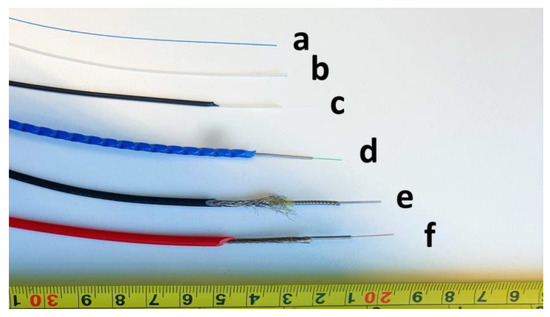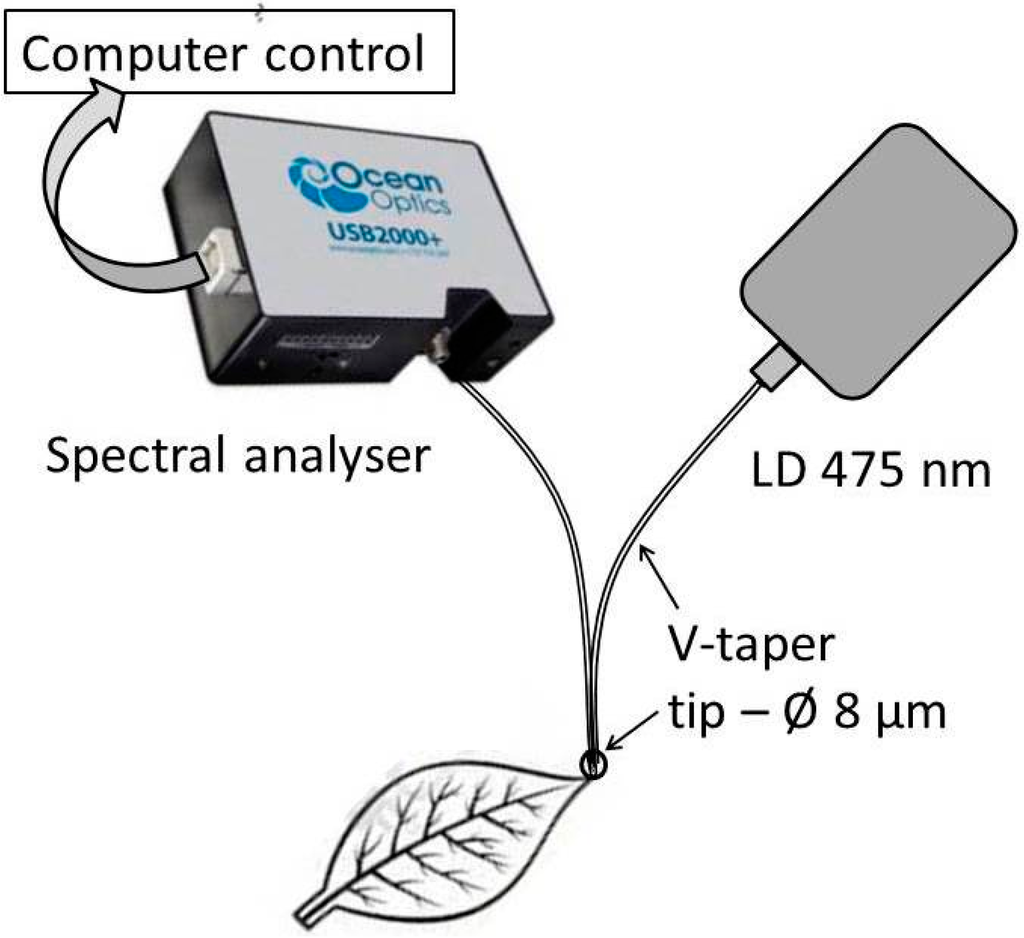High-Performance Optical Fibre Diameter Analyser for Specialized Applications
High-Performance Optical Fibre Diameter Analyser for Specialized Applications
Blog Article
Optimize Your Fibre Optic Efficiency: Recognizing Optical Fiber Diameter Analyser Technology
The efficiency of fibre optic systems is critically influenced by the precision of their size, an element typically overlooked in the search of optimal signal honesty. Recognizing the modern technology behind optical fibre size analysers exposes the intricate balance in between dimension precision and production quality. These tools not only enhance compliance with market requirements yet also supply real-time insights that can preemptively attend to potential concerns. The implications of their usage extend beyond mere dimension; they can basically modify the landscape of fibre optic effectiveness. What factors should one think about to harness their complete capacity?
Value of Optical Fiber Diameter
The size of optical fibre plays an important function in establishing the efficiency and effectiveness of communication systems. On the other hand, smaller sized sizes have a tendency to support less modes, which can boost signal quality and reduce crosstalk.

Moreover, comprehending the size's implications can lead to set you back financial savings by decreasing the need for signal boosting and repeaters in comprehensive networks (optical fibre diameter analyser). Finally, the importance of optical fiber size can not be overstated, as it straight influences the total performance and integrity of modern-day communication systems

Just How Diameter Impacts Signal Quality
Signal quality in optical fibre systems pivots dramatically on the diameter of the fiber. The diameter influences numerous vital specifications, consisting of depletion, bandwidth, and modal diffusion. A smaller sized diameter can bring about greater attenuation prices, causing signal loss as light journeys through the fibre. This attenuation can endanger the stability of the transmitted information, bring about a decline in signal high quality, particularly over lengthy distances.
On the other hand, bigger sizes normally permit improved light capture and decreased modal dispersion, improving signal clearness. In multimode fibers, a bigger core size can sustain several light settings, however it may additionally introduce intermodal dispersion, which can deteriorate signal quality. Therefore, choosing the ideal fiber size is vital for achieving the desired efficiency in details applications.
Additionally, the interaction between the fiber diameter and the wavelength of the light utilized plays a vital function in identifying the effective transmission range and total signal honesty. Because of this, comprehending just how fibre size influences signal high quality is necessary for network developers and engineers making every effort to maximize optical fiber systems for reputable, high-speed information transmission.
Review of Diameter Analyser Innovation
In several optical fibre production procedures, precise dimension of fiber size is important for making certain regular performance and top quality (optical fibre diameter analyser). Size analysers are advanced instruments developed to evaluate the physical measurements of optical fibers with high precision. They utilize sophisticated optical and laser technologies to gauge the diameter, ovality, and concentricity of the fiber, therefore giving vital information for quality assurance
These analysers can operate in-line during the manufacturing process or as part of off-line testing protocols. In-line systems make it possible for real-time monitoring, permitting makers to adjust criteria immediately, consequently keeping optimum manufacturing conditions. Off-line analysers, on the other hand, provide comprehensive assessments of batches, ensuring that any deviations from defined resistances are identified and attended to.
Diameter analysers dramatically add to the decrease of problems in optical fibers, enhancing general item reliability. By constantly gauging essential parameters, these modern technologies assist in compliance with sector requirements and specifications. As the demand for high-performance optical fibers remains to climb, the role of diameter analysers comes to be progressively important in accomplishing the desired high quality and efficiency standards in fiber optic systems.
Secret Functions of Fibre Diameter Analysers
Although numerous models of fiber diameter analysers exist, they commonly share several vital features that improve their functionality and dependability. One of one of the most significant functions is high-resolution measurement abilities, which guarantee precise diameter analyses, critical for maintaining top quality control in fiber production. Additionally, lots of analysers integrate advanced optical sensing units created to identify minute variations in fibre diameter, hence offering invaluable information for procedure optimization.
One more vital attribute is real-time tracking, allowing drivers to receive instant comments on fibre diameter throughout the manufacturing procedure (optical fibre diameter analyser). This capacity assists in rapid changes and minimizes the chance of issues. Numerous analysers also come geared up with user-friendly user interfaces, allowing operators to conveniently browse through setups and data outputs
Furthermore, robust information storage and analysis capabilities are important for tracking historic performance patterns and guaranteeing compliance with sector requirements. Some versions even offer connectivity alternatives for combination into existing manufacturing control see this website systems, boosting general operational performance. Portable and compact layouts enable for flexible deployment within production environments, ensuring that high quality assurance processes are smooth and efficient. These functions collectively contribute to the efficiency of fiber diameter analysers in enhancing fibre optic performance.
Ideal Practices for Fibre Optimization

First, regular calibration of optical fibre size analysers is vital. This ensures accurate dimensions and reduces potential inconsistencies that might affect performance. Next, maintaining a clean workplace is important; dust and pollutants can cause signify degradation.
Furthermore, it is essential to select fibers that satisfy certain application demands. This entails evaluating variables such as depletion, bandwidth, and ecological problems. Proper installment techniques should also be stuck to, including preventing sharp bends and too much tension, which can endanger fibre honesty.
Additionally, using innovative monitoring systems can facilitate real-time performance evaluations, enabling check over here punctual identification of issues. Routine screening and upkeep need to be conducted to make sure that fibres remain within optimal operational criteria.
Last but not least, training personnel on the current fiber optimization innovations and methods will enhance their capacity to implement effective techniques. By following these ideal methods, organizations can considerably enhance the performance and life expectancy of their optical fibre systems, ensuring reliable communication and information transfer.
Verdict
In conclusion, the combination of optical fiber diameter analyser modern technology is vital for taking full advantage of fiber optic efficiency. By ensuring exact dimensions of fibre dimensions, these analysers substantially boost signal quality and decrease losses throughout data transmission. Routine calibration and upkeep of the analysers are essential to support optimal performance and compliance with industry requirements. Inevitably, the application of this technology assists in improved data transmission rates and reinforces signal integrity, adding to the overall efficiency of fiber optic systems.
Signal high quality in optical fibre systems pivots significantly on the diameter of the fiber.In several optical fiber production procedures, exact dimension of fiber size is use this link essential for making certain regular performance and quality. As the need for high-performance optical fibres continues to rise, the role of size analysers becomes increasingly important in achieving the wanted quality and performance criteria in fiber optic systems.
These attributes collectively contribute to the efficiency of fibre diameter analysers in enhancing fibre optic efficiency.
In conclusion, the assimilation of optical fiber diameter analyser technology is critical for making the most of fiber optic efficiency.
Report this page